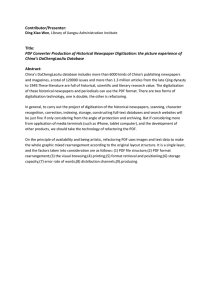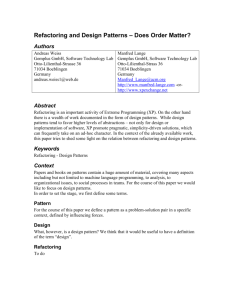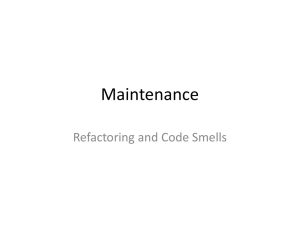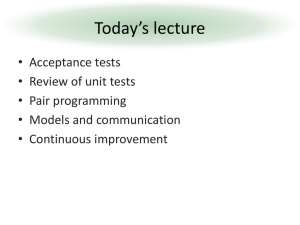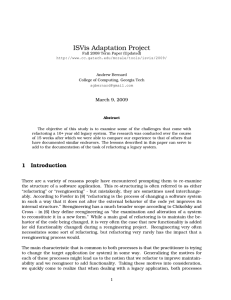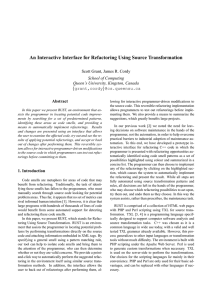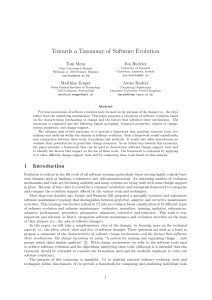Understanding the Economics of Refactoring
advertisement
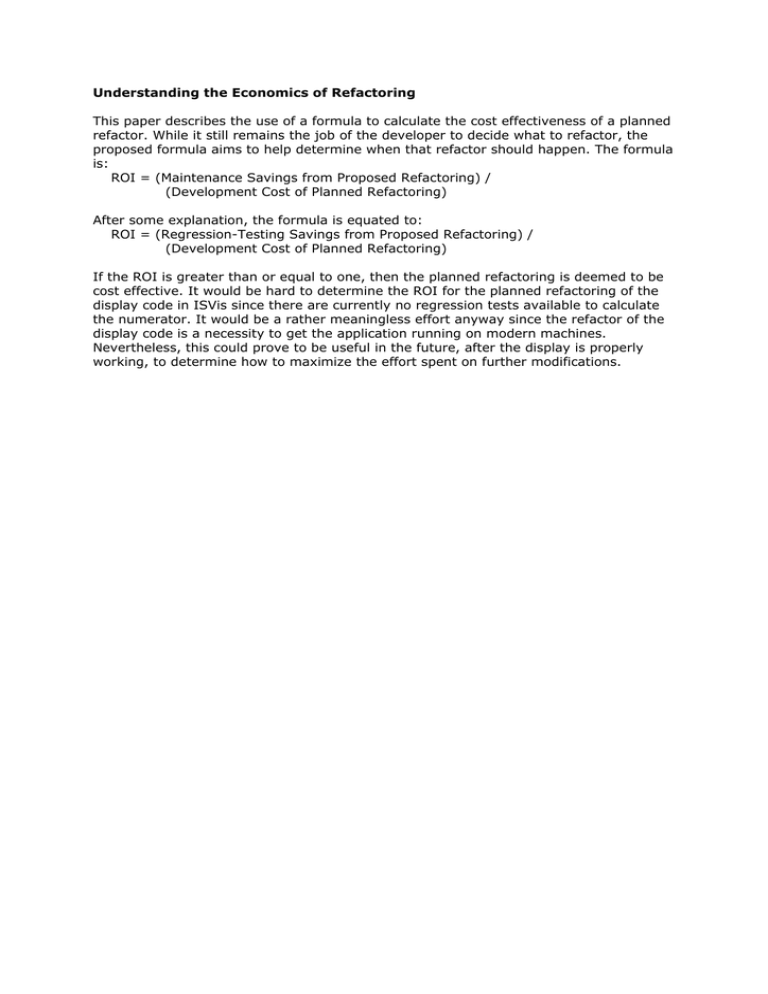
Understanding the Economics of Refactoring This paper describes the use of a formula to calculate the cost effectiveness of a planned refactor. While it still remains the job of the developer to decide what to refactor, the proposed formula aims to help determine when that refactor should happen. The formula is: ROI = (Maintenance Savings from Proposed Refactoring) / (Development Cost of Planned Refactoring) After some explanation, the formula is equated to: ROI = (Regression-Testing Savings from Proposed Refactoring) / (Development Cost of Planned Refactoring) If the ROI is greater than or equal to one, then the planned refactoring is deemed to be cost effective. It would be hard to determine the ROI for the planned refactoring of the display code in ISVis since there are currently no regression tests available to calculate the numerator. It would be a rather meaningless effort anyway since the refactor of the display code is a necessity to get the application running on modern machines. Nevertheless, this could prove to be useful in the future, after the display is properly working, to determine how to maximize the effort spent on further modifications.
